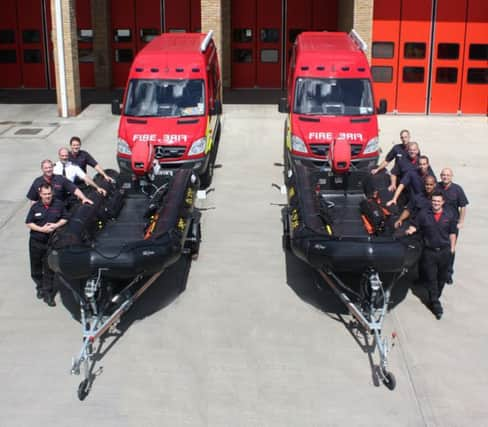Milton Keynes firefighters back drowning prevention campaign


That’s the message from firefighters during this year’s Drowning Prevention Week, whch is being run by the Royal Life Saving Society UK. It follows tragedy in Milton Keynes two years ago, when two people died after going into the lake at Bletchley’s Blue Lagoon Local Nature Reserve.
“Even good swimmers can be caught out by hidden dangers such as fast currents, deep holes, soft mud, weeds or rubbish. Any stretch of water, still or flowing, has the capability to kill,” said Richard Priest, head of Buckinghamshire Fire & Rescue Service’s community safety team.
Advertisement
Hide AdAdvertisement
Hide Ad“Every year, countless people suffer injuries or fall ill after swimming in the UK’s inland waterways, and in some cases lose their lives. Many weren’t even intending to go into the water but fell in while fishing, walking or jogging.”
Firefighters from Buckinghamshire and Milton Keynes regularly visit lakes, rivers and other areas of open water where the public are known to swim to promote the message that the only safe place to swim is in a swimming pool.
Buckinghamshire Fire & Rescue Service has Water Rescue Units based at Beaconsfield Fire Station and Newport Pagnell Fire Station. In 2014, Buckinghamshire & Milton Keynes Fire Authority invested £30,000 in replacing the rescue boats at both stations.
As well as the risk of drowning, the dangers of swimming in open waterways include:
Advertisement
Hide AdAdvertisement
Hide AdRisk of catching diseases, including Weil’s disease - any open wounds can become infected.
Water can be deep, with hidden hazards such as shopping trolleys, fishing hooks, broken glass or water weed.
Water stays very cold, and swimmers can catch hypothermia.
Remote sites make it hard for the emergency services to reach casualties.
Richard asks that people remember these safety tips:
The safest place to swim is in a supervised swimming pool. The water is clean, clear and warm, and there are lifeguards on hand if something goes wrong.
Advertisement
Hide AdAdvertisement
Hide AdWarn your children of the risks, and know where they are when they are out playing.
Act responsibly near water, and never swim, even where allowed, after drinking alcohol.
If you see a swimmer is in difficulty or there is a risk of drowning, call 999
At home, keep small children away from ponds and pools and make sure they are supervised in the bath.